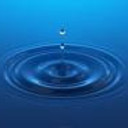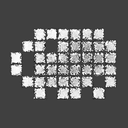Scale in tonal intervals?
Although historically used in a slightly different way, in today's modern theory, a tetrachord is a four note scalar pattern within the interval of fourth. There are fundamentally 4 of them:
Lydian - C D E F#
Ionian - C D E F
Dorian - C D Eb F
Phrygian - C Db Eb F
All of the fundamental scales that are used in Western Music are made of combining these tetrachords together. For instance:
Locrian is made of a combination of Phyrgian and Lydian tetrachords separated from each other by the interval of minor 2nd:
C Db Eb F < --- > Gb Ab Bb C
--C Phrygian--| min 2 |----Gb Lydian----
Now, of course you can come up with more authentic tetrachords other than these four and combine them together in any way you want to create many distinct sounding synthetic scales.
i.e.:
C Db Eb F# -- G Ab B C
in which two altered phrygian tetrachords combined together with a minor 2nd interval.
I don't know how you've got the impression of pianists only dealing with such theoretical things Maelstorm, but the truth is, this bit of theory has been greatly favored by several composers from Prokofiev, Bartok, Stravinsky to John Zorn, John Adams and many jazz giants who based their music on modal harmony, like Coltrane, Miles, Coleman, Monk, Sun Ra etc.
100% PD
pure puredata it's all synthetized in real time, there were min 15 oscillators working per section i think.
to be honest i have to say that there are also two mics + long reverb (and feedback) processed by pd in real time (for example the first "thwoothoothoo" sounds you hear)
around the fourth minute and half enter some sinusoids, sawtooth and random waves completely made by/in pd: no samples here even if in the patch there is a sound-player.
for example this is made without external inputs, only synthesis (proper 100% PD):
http://www.ciansynthesis.net/sounds/session%2B23-06-19h50m.mp3
as i said before, the patch could be little confusing so feel free to ask, and if possible i will try to clarify.
Pd with a big amp
hello everybody
i'm trying to make a synth with pure data
i want to play it with a midi keyboard with my amp ( hartke 3500)(it's a bass amp)
programming the synth make no problem
the problem is the sound:
it's very bassy and the high frequency are low define
for example, when i synthetize a sawtooth with a comb filter, the knob of the filter change almost nothing on my amp(but it's ok on my hi-fi system)
maybe my programation is wrong?
i use fexpr~ (($f2*$x1[$f3])+$x1[0])/2
with -64<$f3<0 and -1<$f2<1
my question is what kind of amp is better for this : a PA or a bass amp?
another question:
i got a lot of foldover in the high frenquency note ( i got a 48 key midi keyboard)
in synthetising a modulated sawtoth
my sound card is a m-audio usb fast track 48kHz 16 bit
i never test with a 96kHz sound card but is the improvement very big with this kind of card?
And in general:
can i have a better sound in a commercial way(for example a clavia nord modular)
than a solution with pd + sound card
thanks for help me
Charles
Reading a Guitar Hero controller?
I want the recolorable fret switches so that different scale degrees can have assigned colors, creating synesthetic relationships between scales and palettes. I'm imagining a improvisitory light show using GEM, using midi controllers some of which directly effect the sounds (synthetic instruments) and some which directly effect the light and indirectly the music (compositional abstraction). I posted a little demo patch of scale to color at the bottom of this thread(http://puredata.hurleur.com/sujet-1930-diy-library-part-diy-perk).
From what I've read, which is very little, the arduino sounds like the gestalt of synthetic instrument creation. I guess I'll have to learn to hack one. I bet it would go really well with the NIA brain helmets (http://en.wikipedia.org/wiki/Neural_Impulse_Actuator).
enough craziness for now.
Inside on a rainy day
In order to be objective I tried to hear the sounds by closing my eyes
and using headphones. The effect is very close to reality
(I felt like "where is my umbrella?" and get back my winter clothes I just put away! Brrr...).
Impressive!
Waiting for the synthetic sound design book.
Cheers,
AlbertoZ
Inside on a rainy day
Hi myoozik
Thanks for the vote mate. Some tutorials are on my site.
I wish I could tell you the whole methodology in this post. Because that's not possibe I wrote a textbook on the subject of synthetic sound design. It will be here soon ... honestly 
All the examples are in Pd
The real trick is factoring the models so you can run them in real time for virtual worlds/ video games. That's what procedural sound models are for, because it doesn't make much sense for ordinary (in advance) sound design.
CompDR drum generator
Hi Domien, nice indeed!
A bit too synthetic for my taste (probably drum machine is one case in which
I'd use samples instead of synthesis - but that's me!)..
Contrary to Obi, I like the gui a lot  . It's compact, cryptic, yes, but
. It's compact, cryptic, yes, but
once you get used to it you get payd back.
I also really like the graphical style you give to your patches, usually
very refined. It's very "homogeneous" (I can recognise some of the
gui ideas you use to laala ...)
Greetz,
AlbertoZ
MS decoding
When I was studying sound recording, I got really into M/S recording. It is kind of like black magic. Certainly the most versatile stereo image you can get from two microphones. Interesting Trivia: M/S was actually invented by Engineers who were working on broadcasting orchestral performances on German TV. They needed to find a way that the music could sound good on the common mono TV sets as well as the more modern stereo ones. If you mix your M/S tracks back to stereo, they sound great. Then, if you sum them to mono, the side tracks disappear (because they are perfectly out of phase) and you are left with mid track only. Viola! Also, it is great fun to play around with the position of the microphones. Obviously, for a pristine recording it is best to get the capsules as near coincident as possible. However, if you move each mic about the room, you can actually create some pretty cool 'synthetic' stereo images.
Some new bird sounds
I don't know enough about birds to tell anything sensible about them  But the seabirds and their rainforest nephews sound almost convincing to me. Riverbirds sounds - in it's own nice way - rather synthetic.
But the seabirds and their rainforest nephews sound almost convincing to me. Riverbirds sounds - in it's own nice way - rather synthetic.
I was really wondering how you bring the randomnes generation factor in it, or is everything sequenced one way or another?
Edit : i'm looking into your birdbox2 patch and i'm wondering how the tweetivity actually works (the initial bit with the noise lowpassed and multiplied...)?
Thx,
Domien
Inside on a rainy day
The wind and window are very nice indeed. Reminds me of the winning entry of the 2007 kvr developer challenge. It's a set of 5 free plugins (birds, insects, wind, thunder and rain) by xoxos (http://www.xoxos.net).


